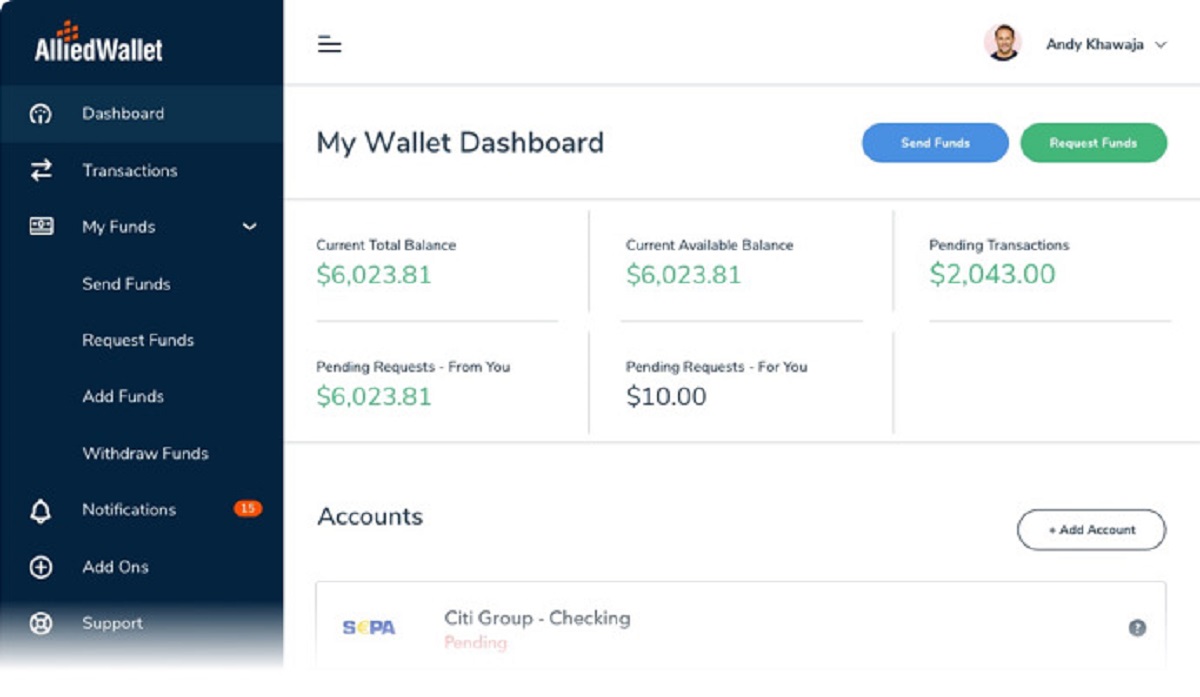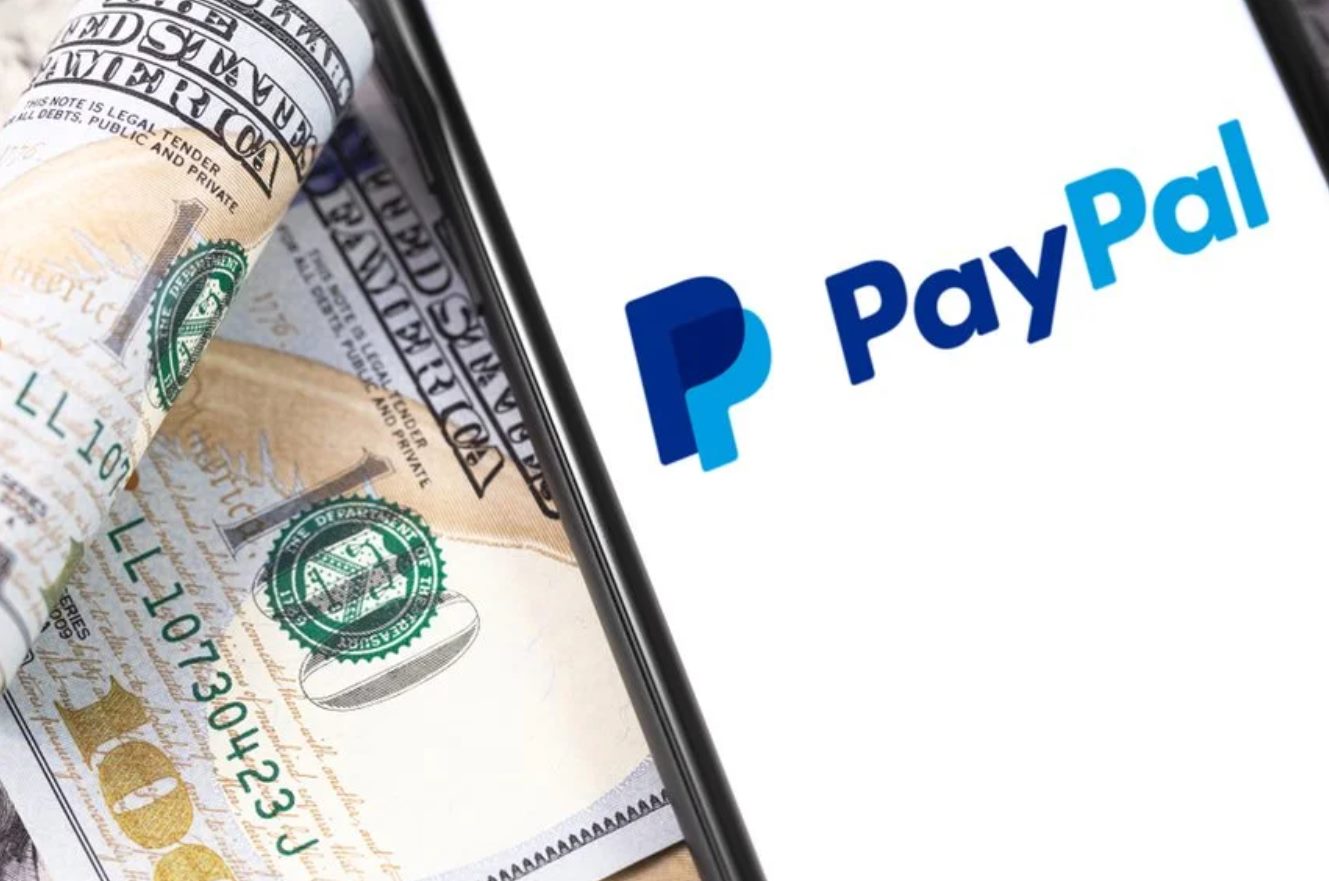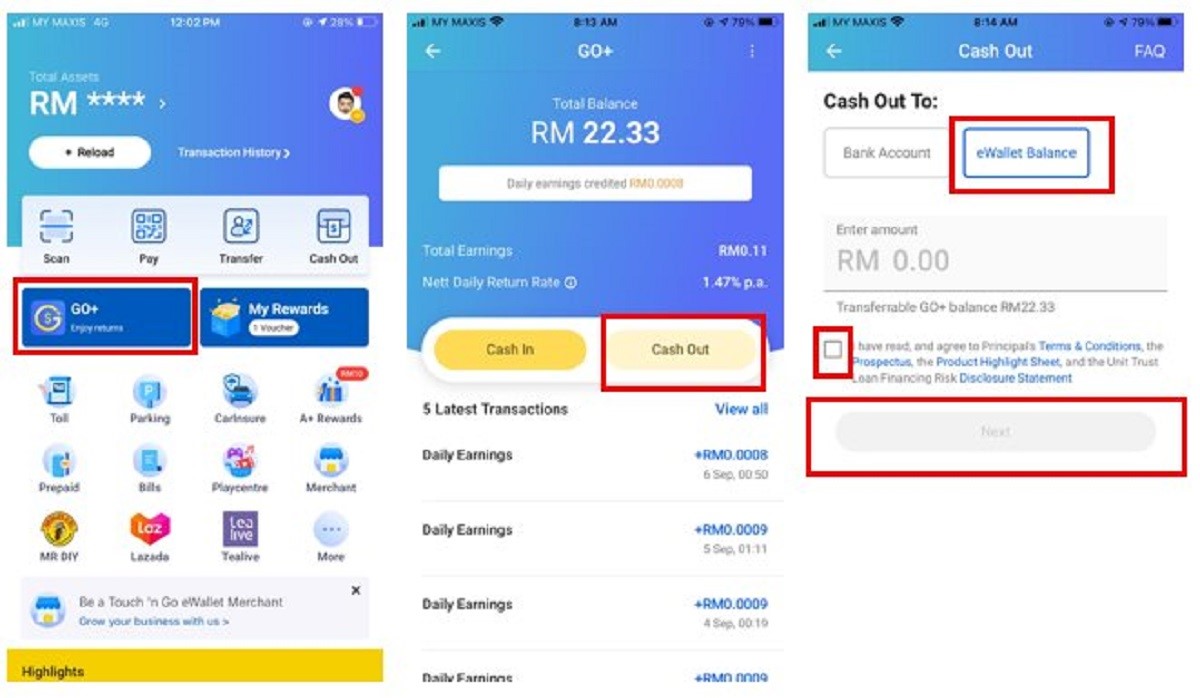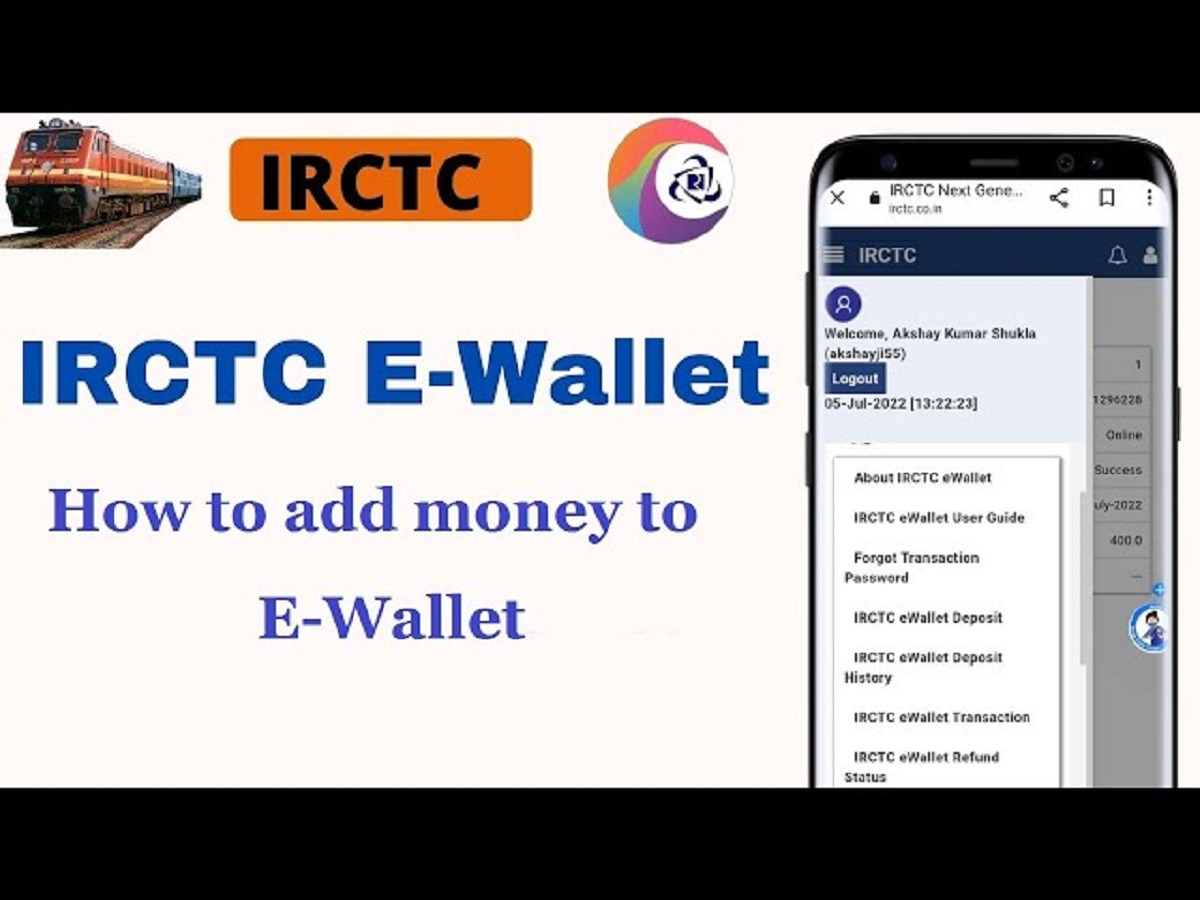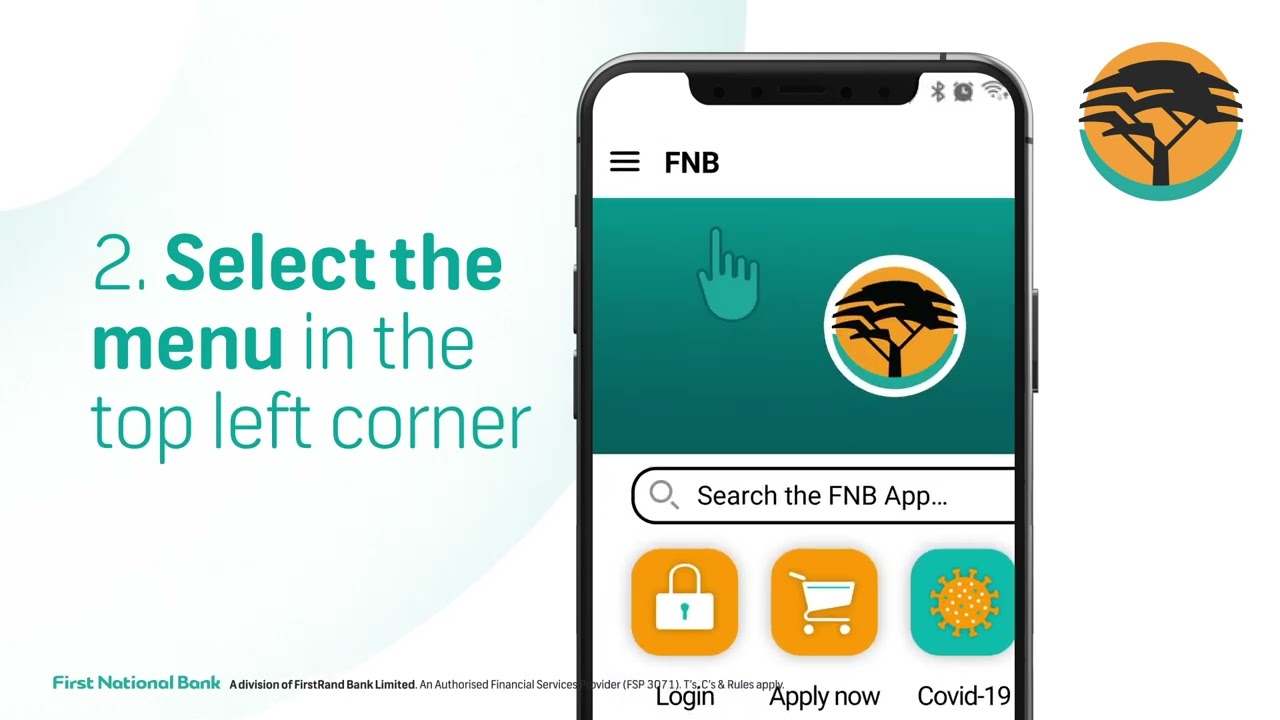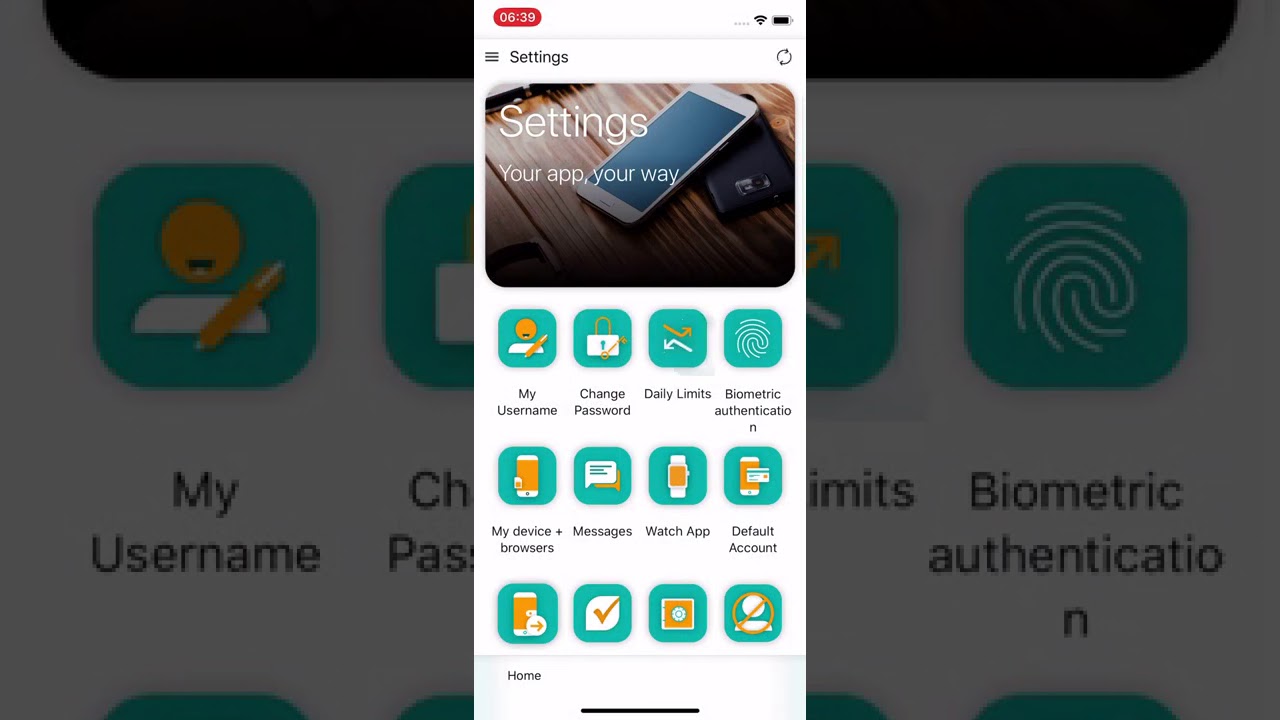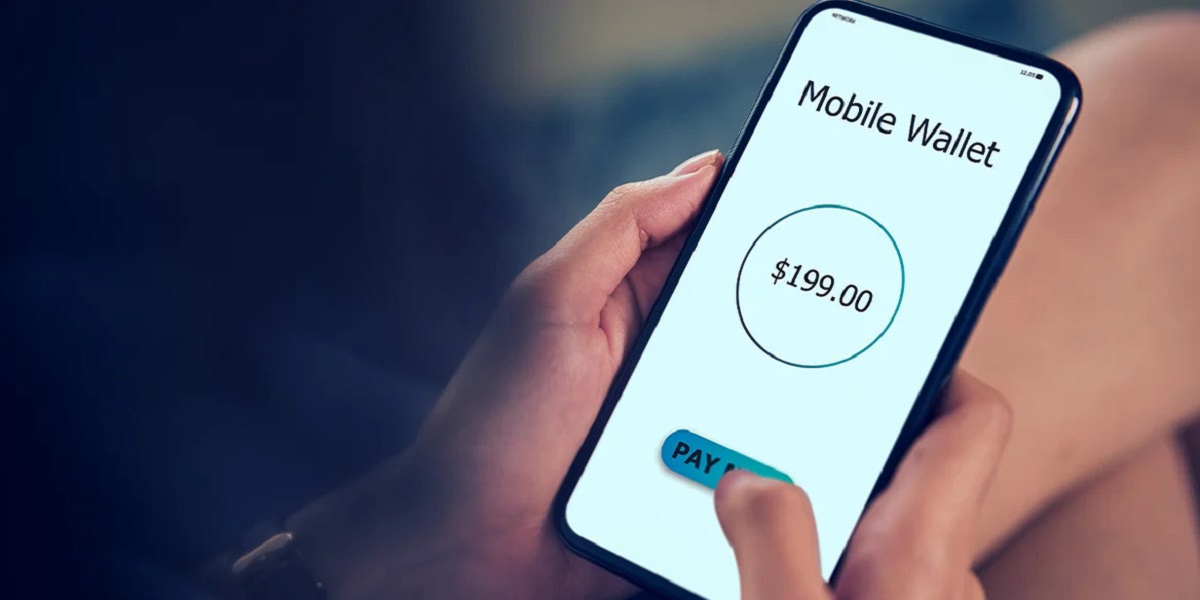Introduction
Welcome to the digital age, where receiving money has become faster and more convenient than ever before. With the rise of e-wallets, you can now seamlessly receive funds from anywhere in the world, without the need for physical cash or cumbersome bank transfers. Whether you’re a small business owner, a freelancer, or just someone who frequently receives payments from friends and family, e-wallets offer a secure and efficient way to receive money.
In this guide, we’ll walk you through the process of setting up an e-wallet account, linking your bank account, adding funds, and, most importantly, receiving money from various sources. We’ll also provide tips on managing your e-wallet balance, withdrawing funds, and ensuring the utmost security and privacy for your transactions.
By the end of this guide, you’ll have all the knowledge you need to confidently receive money via e-wallets and fully enjoy the benefits of this digital payment solution.
Setting up an E-wallet Account
The first step in receiving money via e-wallet is to set up an account with your chosen e-wallet provider. Start by visiting their website or downloading their mobile app from the App Store or Google Play Store. Once installed, follow the on-screen instructions to sign up for an account.
You will typically be asked to provide basic information such as your name, email address, and phone number. Some e-wallet providers may also require additional verification steps to ensure the security of your account. This could include submitting identification documents or linking your account to your social media profiles.
After successfully signing up, you will be prompted to create a secure password for your e-wallet account. Make sure to choose a strong password that combines uppercase and lowercase letters, numbers, and special characters to protect your account from unauthorized access.
Once your account is set up, take the time to explore the e-wallet app or website, familiarizing yourself with its features and settings. You may find options to customize your account, set transaction limits, and enable additional security measures.
Remember, each e-wallet provider may have unique features and settings, so it’s a good idea to read through their user guide or FAQs for a comprehensive understanding of their platform.
Linking Your Bank Account
Linking your bank account to your e-wallet is an important step that allows you to easily transfer funds between your bank and e-wallet. This not only enables you to receive money from other users but also gives you the flexibility to withdraw funds to your bank account whenever needed.
To link your bank account, navigate to the settings or profile section of your e-wallet app or website. Look for the option to “Link Bank Account” or a similar phrase. Click on it and follow the instructions provided.
You will likely be asked to input your bank account details, including the account number and routing number. Additionally, some e-wallet providers may require you to verify ownership of your bank account by confirming small deposits made to your account or by providing a bank statement.
It’s important to choose a reputable e-wallet provider that uses secure encryption protocols to safeguard your banking information. This ensures that your sensitive data is protected from unauthorized access or fraudulent activities.
Once your bank account is successfully linked, you can easily initiate transfers between your e-wallet and bank account. This allows you to receive funds from other e-wallet users directly into your e-wallet balance and transfer those funds to your linked bank account whenever you wish.
Keep in mind that some e-wallet providers may charge a small fee for transferring funds to your bank account. Make sure to familiarize yourself with their fee structure before initiating any transfers.
Adding Funds to Your E-wallet
Now that you have set up your e-wallet account and linked your bank account, it’s time to add funds to your e-wallet balance. This will enable you to receive money and make payments conveniently within the e-wallet ecosystem.
There are several ways you can add funds to your e-wallet, depending on the options provided by your e-wallet provider. Here are some common methods:
- Bank Transfer: Most e-wallets allow you to transfer funds directly from your linked bank account. Simply select the bank transfer option in your e-wallet app or website, enter the amount you want to transfer, and confirm the transaction. The funds will be credited to your e-wallet balance within a specified timeframe, usually within a few hours or up to a few business days.
- Credit/Debit Card: Some e-wallets allow you to add funds using a credit or debit card. Simply enter your card details, specify the amount you want to add, and complete the transaction. The funds will be instantly available in your e-wallet balance.
- Cash Reload: Certain e-wallets offer cash reload options at authorized retail locations. You can visit these locations, provide your e-wallet details, and deposit cash into your e-wallet account. The cash will be added to your e-wallet balance, allowing you to use the funds digitally.
It’s important to note that some e-wallet providers may impose limits on the maximum amount you can add to your e-wallet balance. Make sure to review these limits and any associated fees before adding funds to your e-wallet.
Once the funds are successfully added to your e-wallet balance, you can start using your e-wallet to receive and make payments with ease.
Receiving Money from Other E-wallet Users
One of the major advantages of using an e-wallet is the ability to receive money quickly and conveniently from other e-wallet users. Whether you’re receiving payment for goods or services, splitting a bill with friends, or receiving funds from family members, the process is seamless and hassle-free.
To receive money from another e-wallet user, follow these simple steps:
- Provide your e-wallet ID or username to the person who wants to send you money. This could be in the form of a QR code, a unique identifier, or simply your e-wallet username.
- The sender should enter your e-wallet ID in their e-wallet app or website and specify the amount they want to send.
- Once the sender confirms the transaction, the funds will be instantly transferred to your e-wallet balance.
- You will receive a notification or confirmation email from your e-wallet provider, informing you of the incoming funds.
Depending on the e-wallet provider, you may also have the option to request money from another user. This can be useful when you need to send a payment reminder or if you are expecting funds from someone.
It’s important to verify the sender’s details before accepting any money transfers. Check the sender’s e-wallet ID or username to ensure it matches the person you are expecting payments from. This helps prevent fraudulent transactions and ensures the security of your e-wallet balance.
Once the funds are successfully received, they will be available in your e-wallet balance, ready to be used for future transactions or withdrawals. You can keep track of all incoming transactions within your e-wallet app or website, allowing you to easily manage your incoming funds.
Receiving Money from Non-E-wallet Users
While e-wallets have become increasingly popular, not everyone may have an e-wallet account. However, that doesn’t mean you can’t receive money from non-e-wallet users. You can still receive funds from individuals who prefer to use traditional banking methods or other digital payment platforms.
Here are a few options for receiving money from non-e-wallet users:
- Bank Transfer: Non-e-wallet users can transfer funds directly from their bank account to your bank account. Simply provide them with your bank account details including the account number and routing number. The sender can initiate the transfer through their online banking platform or by visiting their bank in person.
- Payment Gateways: Some e-wallet providers offer payment gateway services that allow you to generate payment links or request payments from non-e-wallet users. You can create a payment request and share the link with the sender, who can then use their preferred payment method to fulfill the payment.
- Peer-to-Peer Payment Apps: There are various peer-to-peer payment apps available that allow users to send money to other individuals using their smartphones. You can share your preferred payment app details (e.g., Venmo, PayPal) with non-e-wallet users, who can then send you the funds through those platforms.
When receiving money from non-e-wallet users, make sure to provide accurate and up-to-date information to avoid any delays or errors in the transaction process. Double-check your bank account details or payment app information before sharing it with others.
Once the funds are received in your bank account or other payment platform, you can choose to transfer the funds to your e-wallet manually or use them directly for your financial needs.
Remember to keep track of all incoming transactions from non-e-wallet users for record-keeping and financial management purposes.
Managing Your E-wallet Balance
Effectively managing your e-wallet balance is essential to ensure smooth financial transactions and keep track of your funds. Here are some key tips for effectively managing your e-wallet balance:
- Regularly Review Transactions: Take the time to review your e-wallet transactions regularly. This helps you identify any discrepancies, unauthorized transactions, or errors. If you notice any discrepancies, contact your e-wallet provider immediately to resolve the issue.
- Set Transaction Limits: Many e-wallet providers offer the option to set transaction limits to help you manage your spending. Set limits that align with your financial goals and preferences. This can prevent overspending and provide an added layer of security.
- Monitor Your Balance: Keep an eye on your e-wallet balance to ensure you have sufficient funds for your upcoming expenses. Regularly checking your balance helps you avoid any unexpected payment failures or insufficient fund situations.
- Use Budgeting Tools: Some e-wallet apps provide budgeting tools that allow you to categorize your expenses, set spending goals, and track your financial activities. Utilize these tools to gain better control over your finances and make informed spending decisions.
- Enable Security Features: Protect your e-wallet balance by enabling additional security measures such as two-factor authentication, biometric authentication, or a PIN for transactions. These features provide an extra layer of protection against unauthorized access to your funds.
- Keep Backup Options: It’s always a good idea to have a backup payment method handy in case of any unforeseen issues with your e-wallet. Linking multiple bank accounts or having a credit card linked to your e-wallet provides an alternative payment option when needed.
By implementing these practices, you can effectively manage your e-wallet balance, maintain control over your finances, and enjoy a seamless and secure digital payment experience.
Withdrawing Funds from Your E-wallet
At times, you may want to withdraw funds from your e-wallet and transfer them back to your bank account to have physical cash or use them for other financial purposes. Most e-wallet providers offer simple and convenient methods for withdrawing funds. Here’s how you can withdraw funds from your e-wallet:
- Bank Transfer: The most common method of withdrawing funds from your e-wallet is through a bank transfer. Access the withdrawal option in your e-wallet app or website, select the amount you wish to withdraw, and choose the bank account you want to transfer the funds to. Follow the instructions provided to complete the withdrawal request. The funds will typically be transferred to your linked bank account within a few business days.
- ATM Withdrawal: Depending on the e-wallet provider, you may have the option to withdraw cash directly from an ATM using your e-wallet. Some e-wallets provide a physical card that can be linked to your e-wallet balance, allowing you to withdraw funds at any ATM that accepts the card’s network. Check with your e-wallet provider to see if this option is available.
- P2P Transfer: Certain e-wallets enable you to transfer funds to other e-wallet users. If you have a trusted individual or business who uses the same e-wallet as you, you can transfer funds to them and request a cash withdrawal from them separately. This can be convenient if you need quick access to physical cash.
- Merchant Payments: Some e-wallets allow you to make payments directly to participating merchants. If you need to purchase goods or services from a specific merchant, check if they accept payments via your e-wallet. Paying the merchant directly can reduce the need for withdrawing funds to your bank account.
Prior to initiating a withdrawal, confirm if any fees or processing timeframes are associated with the chosen withdrawal method. Some e-wallet providers may charge a nominal fee for withdrawing funds, and processing times can vary depending on the transfer method.
Always ensure that you have sufficient funds in your e-wallet before initiating a withdrawal to avoid any transaction failures or overdrawing your account.
By utilizing these withdrawal options effectively, you can easily access the funds in your e-wallet and use them as per your financial requirements.
Ensuring Security and Privacy
When it comes to managing your e-wallet and receiving money digitally, ensuring the security and privacy of your financial transactions is of utmost importance. Here are some essential measures you can take to safeguard your e-wallet and protect your personal information:
- Choose a Trusted E-wallet Provider: Select a reputable e-wallet provider that has a strong track record of security and user privacy. Do thorough research, read reviews, and consider the provider’s security measures and certifications before creating an account.
- Keep Your E-wallet App or Website Updated: Regularly update your e-wallet app or website to the latest version offered by the provider. These updates often include security patches and bug fixes that help protect your account from vulnerabilities.
- Use Strong Passwords: Create a strong and unique password for your e-wallet account. Include a combination of uppercase and lowercase letters, numbers, and special characters. Avoid using easily guessable information such as your birthdate or common words.
- Enable Two-Factor Authentication: Activate two-factor authentication (2FA) within your e-wallet account settings. This adds an extra layer of security by requiring a second verification step, such as a code sent to your mobile device, when signing in or making transactions.
- Be Wary of Phishing Attempts: Beware of phishing emails, texts, or calls that attempt to deceive you into revealing your e-wallet login credentials or personal information. Always double-check the source of any communication and never click on suspicious links or provide sensitive information without verifying the authenticity of the request.
- Regularly Review Your Transactions: Carefully review your e-wallet transactions to check for any unauthorized or suspicious activity. If you notice any discrepancies or unfamiliar transactions, promptly report them to your e-wallet provider for investigation.
- Protect your Mobile Device: Keep your mobile device’s operating system and security applications up to date. Install trusted antivirus software and avoid downloading apps from unofficial sources. Enable biometric authentication, such as fingerprint or facial recognition, to enhance the security of your e-wallet app.
- Monitor Your Privacy Settings: Regularly review and adjust the privacy settings within your e-wallet account. Ensure that you are comfortable with the level of information shared with the e-wallet provider and other users.
By implementing these security measures and maintaining vigilance, you can significantly reduce the risk of unauthorized access to your e-wallet account and protect your personal and financial information.
Conclusion
Receiving money via e-wallets has revolutionized the way we handle transactions in the digital age. With the convenience and security they offer, e-wallets have become a popular choice for individuals and businesses alike. By following the steps outlined in this guide, you can confidently set up an e-wallet account, link it to your bank account, add funds, and receive money from both e-wallet and non-e-wallet users.
Remember to regularly review your transactions, set transaction limits, and monitor your e-wallet balance to effectively manage your finances. Keep your e-wallet account safe and secure by using strong passwords, enabling two-factor authentication, and staying vigilant against phishing attempts.
Whether you’re a freelancer receiving payment for your services, a business owner accepting digital payments, or simply seeking a more convenient way to manage your finances, e-wallets provide a seamless and efficient solution. Enjoy the convenience of receiving money from anywhere and at any time, eliminating the need for physical cash or complicated bank transfers.
As technology continues to advance, the world of digital payments and e-wallets will evolve. Stay updated with the latest features and security measures offered by your chosen e-wallet provider, and always prioritize the security of your financial transactions. Embrace the convenience, simplicity, and security of e-wallets as you embark on your digital payment journey.







